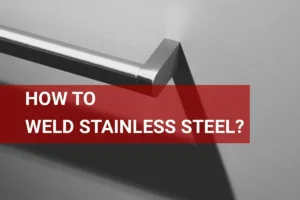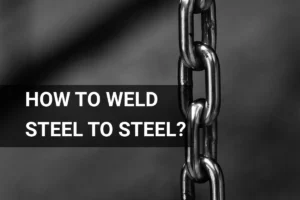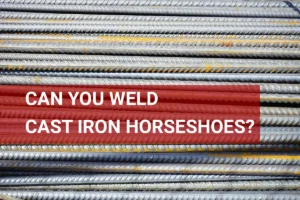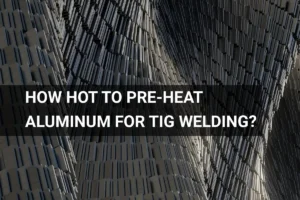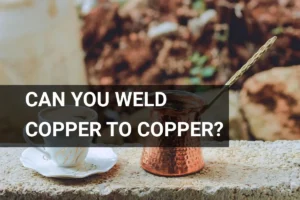Can You Weld Bronze? Exploring Techniques, Tools, and Applications
Published on: June 15, 2025 | Last modified: March 4, 2025
By: Joe Carter
Bronze is a metal alloy, mainly made of copper and tin. It’s strong, resistant to corrosion, and often used in tools and sculptures.
I get asked quite often, can you weld bronze? It’s crucial to know how to weld bronze properly, as welding mistakes can weaken your project. In my experience, understanding the right techniques saves you money and time, and it ensures your welds last.
In this guide, we’ll cover the types of bronze, their weldability, essential tools, steps for welding bronze, safety tips, welding methods, factors impacting weld quality, unique challenges, aftercare, benefits, typical uses, and alternatives to welding bronze. You’ll learn how to bronze weld effectively and whether you can weld aluminum with silicon bronze.
Contents
- Can You Weld Bronze?
- What is Bronze?
- Types Of Bronze and Their Weldability
- Essential Tools Before You Start (Prerequisites)
- Steps for Welding Bronze
- Safety Tips
- Types Of Welding for Bronze
- Factors Impacting Bronze Welding
- Issues Unique to Welding Bronze
- Aftercare and Advanced Tips
- Advantages
- Typical Applications
- What Are Alternatives to Welding Bronze?
- Frequently Asked Questions (FAQs)
- Wrap Up
- References
Can You Weld Bronze?
Yes, you can weld bronze. It’s more difficult than steel due to its lower melting point and alloy variations. Use TIG welding with silicon bronze filler for the best results. Proper temperature control is key to success.
What is Bronze?
Bronze is a metal alloy primarily made of copper (Cu) and tin (Sn). It typically contains about 60-90% copper and 10-40% tin by weight. The precise ratios influence properties like strength and corrosion resistance. In some applications, other metals such as aluminum, nickel, or phosphorus can be added, further altering the alloy’s characteristics.
Can you weld bronze? That’s a topic I’ve explored. I once had a project that involved welding bronze for a decorative fountain. It required a solid understanding of the right techniques for this unique metal.
I also used bronze for a beautiful outdoor sculpture. Knowing how strong silicon bronze welding is helped a lot. When welding bronze, using the right materials, like silicon bronze welding rods, is crucial for durable joints—especially when welding bronze to steel. This process can be both a science and an art!
Types Of Bronze and Their Weldability
So, what types of bronze can you weld? Let’s explore!
-
Aluminum Bronze
Aluminum bronze is a mix of copper and aluminum, known for its strength and corrosion resistance. You can join this type using TIG welding with specialized rods. For those interested in understanding the broader techniques involved in joining metals, copper welding is an essential skill. Preheat the parts to about 400°F (204°C) and keep the arc short to avoid oxidation.
Welding processes can pose certain risks, and it’s important to understand how dangerous welding can be.
-
Copper Nickel Bronze
Copper nickel bronze is used in marine environments due to its durability. You can weld it, but it’s tricky. Clean the surfaces thoroughly and use a MIG welder with argon shielding gas for an effective bond.
-
Silicon Bronze
Silicon bronze contains copper, silicon, and sometimes zinc. It’s ideal for welding steel to bronze. Use TIG welding at a low amperage (Around 150 A) and ensure good gas flow to prevent contamination.
-
Leaded Bronze
Leaded bronze has added lead for improved machinability. However, it’s not preferred for welding due to lead’s low melting point. If you try welding, use the lowest heat setting possible, but expect challenges with proper bonding.
-
Tin Bronze
Tin bronze combines copper with tin, providing high wear resistance. You can weld this type, but it requires specific electrodes. Use a mild heat source and maintain a steady hand for clean seams.
Dealing with imperfections like welding spatter on different materials requires expertise and precision. You can refer to strategies on how to fix welding spatter on glass for additional tips.
You should now have a good understanding of the different types of bronze and their weldability. In the next part, we’ll discuss essential tools before you start.
Essential Tools Before You Start (Prerequisites)
What do you need to begin?
- Bronze Welding Rod: You’ll need bronze welding rods like Silicon Bronze ERCuSi-A. These rods bond bronze effectively, ensuring a strong weld.
- TIG Welder: A TIG welder, such as Lincoln Electric Square Wave TIG 200, is crucial for controlling heat and achieving clean welds. You want steady, precise welds for a solid result.
- Filler Material: Filler metals like RotoMetals Silicon Bronze Filler Wire are essential. They fill gaps and reinforce the weld joint, which increases strength.
- Heat Source: A propane torch or a similar heat source, like Bernzomatic TS8000, is necessary for preheating the bronze. Preheating helps prevent cracking during welding.
- Welding Cup: A welding cup for TIG welding, like Weldcraft 17V, helps you focus your arc precisely, resulting in better control and easier handling.
We’ve wrapped up the essential tools needed before you begin. Next up, we’ll look at the steps for welding bronze.
Steps for Welding Bronze
Let’s cover the steps for effectively welding bronze. Follow these carefully for great results!
-
Prepare the Surface
Start by cleaning the bronze. Use a wire brush or grinder to remove contaminants. Aim for a shiny surface—this helps the weld penetrate better. Don’t skip this step; clean metal increases adhesion and reduces defects.
After cleaning, inspect for cracks or wear. If you find any, consider repairing them before welding. Even small imperfections can lead to big headaches!
-
Select the Right Filler Metal
Choose a filler metal compatible with bronze. Silicon bronze, such as ERCuSi-A, melts around 982-1,093°C (1,800-2,000°F), minimizing warping. This selection is crucial, as it affects the strength and quality of your weld.
For most bronze types, a silicon-based filler works well and offers better corrosion resistance. Test different fillers to see which performs best for your project.
-
Set Up Your Welding Machine
Adjust your welding machine’s settings. For TIG welding, set the amperage around 60 to 80 A for thinner materials, and up to 150 A for thicker sections. A proper cooling system is vital; keep it efficient to avoid overheating.
If you’re MIG welding, choose the right gas mixture—usually 75% Argon and 25% CO2 works well with silicon bronze. Experiment, as settings can vary based on your specific setup.
-
Perform the Weld
Now, start welding! Maintain a steady speed and a consistent arc length of about 1/8 inch (3.2 Mm). Keep the torch angle at about 15° to the weld puddle to ensure proper penetration and a clean finish.
Monitor your surroundings too! Bronze can heat quickly, affecting the structural integrity of your project. Pay attention to the bead; aim for a smooth and even appearance.
-
Cool Down and Clean Up
After welding, allow the bronze to cool naturally. Don’t rush it! Sudden temperature changes can cause cracks. Once cool, remove any slag or oxidation with a wire brush or grinder.
Finally, inspect your weld for uniformity and gaps. If anything seems off, consider re-welding sections. A thorough clean-up gives you peace of mind for future work!
We have now covered the steps for welding bronze. Next, we will examine safety tips related to the process.

Safety Tips
Let’s cover essential precautions for bronze welding.
- Wear a Welding Helmet: Protect your eyes from flashes. A shade 10 helmet offers the best coverage.
- Use Protective Clothing: Prevent burns by wearing flame-resistant clothing. Choose wrap-around sleeves and long pants.
- Ventilate the Area: Adequate airflow helps prevent inhaling harmful fumes. Use fans or weld in an open space whenever possible.
- Keep a Fire Extinguisher Handy: Be prepared for emergencies; a 2A:10B:C extinguisher is ideal. It can save your workspace.
Your safety’s crucial. I always take precautions before welding.
Types Of Welding for Bronze
Let’s explore the different types of welding for bronze: TIG, MIG, Arc, Oxy-Acetylene, and Resistance welding.
-
TIG Welding
TIG (Tungsten Inert Gas) welding is a popular choice for bronze. It uses a non-consumable tungsten electrode and argon gas for shielding. This method offers high precision and control, making it ideal for intricate designs or thin bronze materials.
-
MIG Welding
MIG (Metal Inert Gas) welding is another effective technique. It uses a continuous wire feed, allowing for faster welding speeds. With a proper setup, you can create strong, clean welds in bronze, making this method ideal for specialized welding in larger projects.
It’s important for welders to be aware of medical procedures like MRIs, especially concerning the safety of their equipment. Discover MRI safety for welders to ensure you are taking the right precautions.
-
Arc Welding
Arc welding generates heat from an electric arc between a consumable electrode and the base metal. This process is versatile and can handle thicker bronze pieces. If you’re interested in different methods, exploring various types of welding by metals can help you understand how to avoid potential issues, as it may cause warping in thinner sections.
It’s important to protect your eyes while welding to prevent weld flash injuries.
-
Oxy-acetylene Welding
This type involves burning a mixture of oxygen and acetylene. It’s been used for a long time and works well for bronze. However, control the heat carefully, as overheating can damage your project.
-
Resistance Welding
Resistance welding uses pressure and electric current to join metals. It’s ideal for spot welds in bronze assemblies and is efficient for high-volume production due to its speed.
So far we covered the different welding methods for bronze. Next, let’s look at the factors that affect bronze welding.
Factors Impacting Bronze Welding
What factors influence the ability to weld this unique metal?
-
Material Composition
The type of bronze is crucial. Alloys like silicon bronze contain around 3-5% silicon, enhancing weldability. In contrast, aluminum bronze is more challenging and requires specific techniques to avoid cracking.
-
Welding Techniques
Using the right method is key. TIG (Gas Tungsten Arc Welding) is ideal, offering precision for thin sections. MIG (Gas Metal Arc Welding) may work but often leads to poor fusion if not done correctly.
-
Surface Preparation
Use a clean surface for optimal results. Remove oxides and contaminants as they can hinder the welding process. A clean surface increases adhesion and leads to stronger joints.
-
Heat Management
Managing heat input is essential while welding bronze. Too much heat can cause warping, while too little may lead to incomplete fusion. Aim for temperatures around 650-720°C (1202-1328°F) during welding for the best results.
-
Weld Joint Design
The design of the weld joint affects its strength. Butt and fillet joints are common, but consider bevels for thicker sections. Proper design improves stress distribution and minimizes weak points.
So far in this section we covered the key factors influencing bronze welding. In the next section we will talk about unique challenges in welding bronze.
Issues Unique to Welding Bronze
Let’s examine the challenges of welding bronze.
-
Oxidation During Weld
Welding bronze can create a dark oxide layer, especially with copper-rich bronzes. This layer weakens the weld. Monitor the weld pool and clean it with a brush before it picks up contaminants.
-
Brittleness in Welds
Bronze can become brittle if overheated. Preheat to 400°F (204°C) to avoid cracking. Check for grain structure; a coarse structure indicates a problem.
-
Color Match Difficulties
Perfectly matching colors in bronze is impossible due to variations. Document your bronze’s alloy and conduct test welds, adjusting your filler metal accordingly.
-
Porosity in Welds
Bronze welds often trap gas, leading to porosity. Look for pinholes to identify this issue. Use appropriate shielding gas and maintain your torch tip distance to minimize porosity.
You should now have a good understanding of the unique challenges of welding bronze. In the next part, we’ll discuss aftercare and advanced tips.
Aftercare and Advanced Tips
Here’s critical guidance on caring for your bronze welds, conducting inspections, and advanced insights for skilled welders.
Aftercare Tips
After welding bronze, clean the joint with a solution of 20% vinegar and 80% water to remove flux residue. This mix reduces the risk of corrosion. Apply a wax or corrosion-inhibiting coating like Boeshield T-9 regularly for added protection against tarnish. If you are planning to weld on a vehicle, ensure you know what to disconnect when welding to prevent damage to electronic components.
Inspection
Begin inspection with a visual check for color changes or fatigue around the weld. Use a durometer (Hardness Tester) to ensure the bronze’s hardness remains above 78 HRB (Rockwell B Scale). M2T paint or a hero wax surface can help reveal hidden cracks or imperfections, making diagnostics easier.
Expert Tips
From one expert to another, use acetylene for better flame control when welding bronze. Maintain a travel speed of 300 mm/min (About 12 In/min) to prevent overheating. Adjust the tungsten electrode to expose 3.2 mm (1/8 Inch) to improve arc stability for intricate items with low roads.
Advantages
The main benefit of welding bronze is its excellent corrosion resistance. I once used it to repair a boat, and the results were fantastic—no rust for years!
Additionally, welding bronze offers great strength and flexibility, aesthetic appeal, and outstanding thermal and electrical conductivity. You can also achieve strong joints when welding bronze to other metals, like steel. Plus, it can handle extreme temperatures better than many other alloys.
Typical Applications
People use bronze welding for ornate sculptures, but it also has many practical applications, such as:
- Marine Components: Bronze welding is essential for boat fittings and propellers due to its corrosion resistance in saltwater, making it popular among marine engineers.
- Artistic Welding: Artists often choose bronze for sculptures because of its attractive finish and durability, especially for high-value art pieces.
- Piping Systems: Bronze is common in plumbing for its non-leaching properties, ensuring safety in drinking water systems.
- Aerospace Parts: Bronze welding is used in aviation for specialized aircraft components where strength and weight are critical, making it a preferred choice among aviation manufacturers.
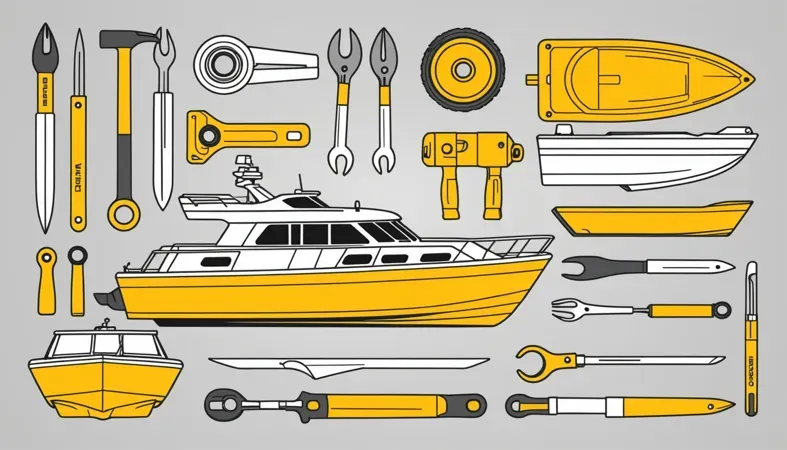
What Are Alternatives to Welding Bronze?
When you need to join bronze, consider brazing or soldering instead. Products such as Harris 56 or Bernzomatic Sil-Fos are popular for their strength and ease of use. Here’s a nugget of wisdom I’ve picked up along the way: these methods can be less expensive and provide better results on thin materials.
You can also explore adhesive bonding for non-structural applications. Epoxy resins like J-B Weld are great choices for projects where heat is a concern. Plus, they allow for flexibility in assembly that welding simply can’t offer.
Frequently Asked Questions (FAQs)
Now let us look at some questions I typically get asked about welding bronze.
Can Bronze Be Welded Together?
Yes, bronze can be welded together. Welding methods like TIG or MIG are effective for bronze, allowing strong joints. Proper technique is essential since the melting point of bronze ranges from 900°C to 1000°C (1652°F to 1832°F), which affects weld quality.
Can You Weld Bronze With a MIG Welder?
Yes, you can weld bronze with a MIG welder. Using a silicon-bronze filler wire gives strong welds. The process is cost-effective and suitable for projects needing quick joins, like repairs on bronze sculptures or fixtures.
Can I Stick Weld Bronze?
No, typically you shouldn’t stick weld bronze. The process creates high heat, which can cause warping or cracking in bronze. For best results, stick to TIG or MIG methods, which provide more control and prevent damage.
How Strong is Silicon Bronze Welding?
Silicon bronze welding produces strong joints, often exceeding 70,000 psi (482 Mpa) tensile strength. This strength is crucial in applications like marine and automotive industries where durability and resistance to corrosion matter.
What is Bronze Welding Used for?
Bronze welding is commonly used in artistic applications, marine equipment, and architectural elements. Its resistance to corrosion makes it ideal for components exposed to moisture, like valve bodies and ship fittings.
Can You TIG Weld Bronze?
Yes, you can TIG weld bronze. This method offers precision control, producing high-quality welds. It’s often chosen for intricate work or thin materials, making it popular for artists and craftsmen.
How to Weld Bronze to Steel?
You can weld bronze to steel using proper filler material and technique. Silicon bronze filler ensures compatibility. Keep in mind, the differing melting points mean you need to manage heat carefully to avoid distortion.
Wrap Up
We’ve gone through a lot, thank you for sticking it out. We covered what bronze is, the different types and their weldability, essential tools for welding, steps to weld bronze, safety tips, various welding techniques, factors affecting the process, and unique issues to watch for. We also looked at aftercare, advantages, common applications, and alternatives to welding bronze.
So, can you weld bronze? Yes, you can. Just remember to choose the right method, like TIG or MIG welding, and use silicon bronze when necessary. Don’t hesitate to get in touch for further assistance if you need more info on how to weld bronze or related concerns.
If you’ve found this information helpful, explore more insights and resources on the topic at What is Welding.
References
- Blodgett, O. W. (1995). Design of Weldments. Cleveland, OH: James F. Lincoln Arc Welding Foundation.
- International Organization for Standardization. (2017). ISO 3834: Quality Requirements for Fusion Welding of Metallic Materials. Geneva, Switzerland: ISO.
Joe Carter is a retired welding professional with over 40 years of hands-on experience in the industry, spanning ship repair, structural welding, and even underwater projects. Joe is a master of MIG, TIG, and Stick welding. Passionate about mentoring the next generation of welders, Joe now shares his decades of expertise and practical insights to help others build rewarding careers in welding.
Adhesive Bonding, Applications, Bronze, Metallurgy, MIG Welding, Safety Tips, Techniques, Tools, Welding, Welding Techniques


